Music
Trailers
DailyVideos
India
Pakistan
Afghanistan
Bangladesh
Srilanka
Nepal
Thailand
Iraq
Iran
Russia
Brazil
StockMarket
Business
CryptoCurrency
Technology
Startup
Trending Videos
Coupons
Football
Search
Download App in Playstore
Download App
Best Collections
Technology
Codefresh, a continuous integration and delivery platform built for the Kubernetes container ecosystem, today announced that it has raised an $8 million Series B round led by M12, Microsoftventure fund.Viola Ventures, Hillsven and CEIF also participated in this round, which brings the companytotal funding to $15.1 million.
In a market where there are seemingly more CI/CD platforms every day, Codefresh sets itself apart thanks to its focus on Kubernetes, which is now essentially the de facto standard for container orchestration services and which is seeing a rapid growth in adoption. The service promises that it can help developers to automate their application deployments to Kubernetes and that teams will see &up to 24X faster development times.& That number seems a bit optimistic, but the whole point of adoption Kubernetes and CI/CD is obviously to speed up the development and deployment process.
&The meteoric rise of Kubernetes is happening so fast that most toolchains haven&t kept up, and M12 knows it,& said Raziel Tabib, Codefresh co-founder and CEO. &With this latest round of funding we&re going to aggressively accelerate our roadmap and expand our customer base.&
The Codefresh platform hit general availability in 2017 and the company currently claims about 20,000 users, including the likes Giphy.
- Details
- Category: Technology
Read more: Codefresh raises $8M Series B round for its container-centric CI/CD platform
Write comment (94 Comments)Editornote:This post was done in partnership withWirecutter. When readers choose to buy Wirecutterindependently chosen editorial picks, Wirecutter and TechCrunch earn affiliate commissions.
When life gets busy, cooking is one of the first activities that many forego to get a bit more free time. However, after a while, ordering out and eating sub-par meals gets old. Kitchen gadgets that assist in quickly preparing meals and drinks are not only helpful but essential in creating balance — and time — to conquer the day.
Whether ita cold brew coffee maker that saves you money or sous vide gear that&ll upgrade your chef skills, we&ve gathered some of our favorite appliances that are enjoyable to use — and that give you another reason to spend more time in the kitchen.
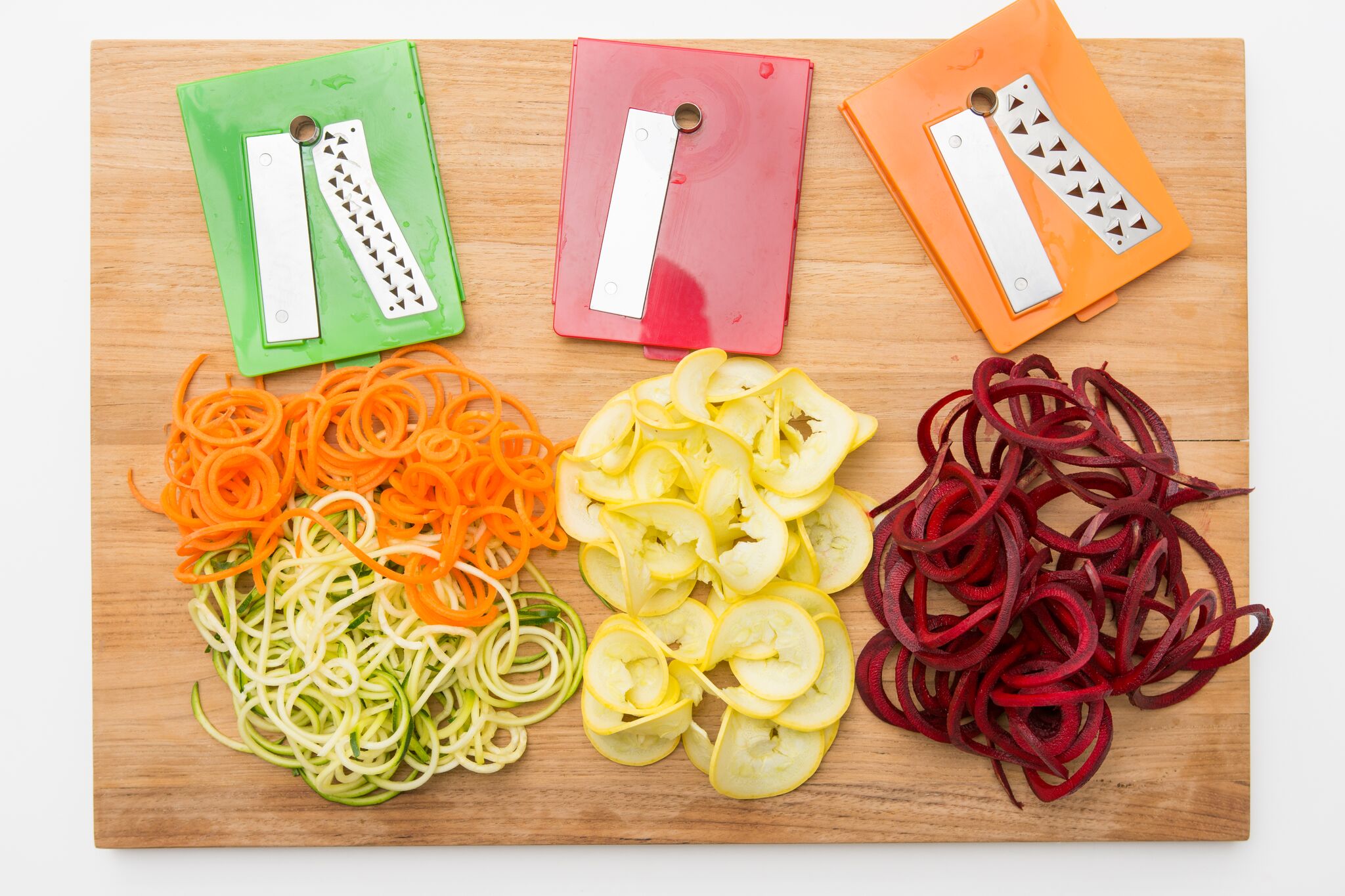
The OXO Good Grips Spiralizer comes with three blade attachments (from left to right): a ⅛-inch spaghetti blade, a ribbon blade, and a ¼-inch fettuccine blade.Photo: Michael Hession
Spiralizer: OXO Good Grips Spiralizer
Thinking about the steps that go into making a really good salad or vegetable dish is enough to make some grab a take-out menu. If you always jump at the opportunity to cross chopping and dicing fresh vegetables off of your agenda, a spiralizer is a simpler alternative to use when prepping food. The OXO Good Grips Spiralizer is our top recommendation; it creates noodles, ribbons and chips that can be used as garnish or a full meal. After you secure it to your countertop, choose a blade and select your vegetable (or fruit) of choice, this gadget does the majority of the work. Pile your zucchini noodles or butternut squash ribbons high and freeze them to be eaten later in the week.
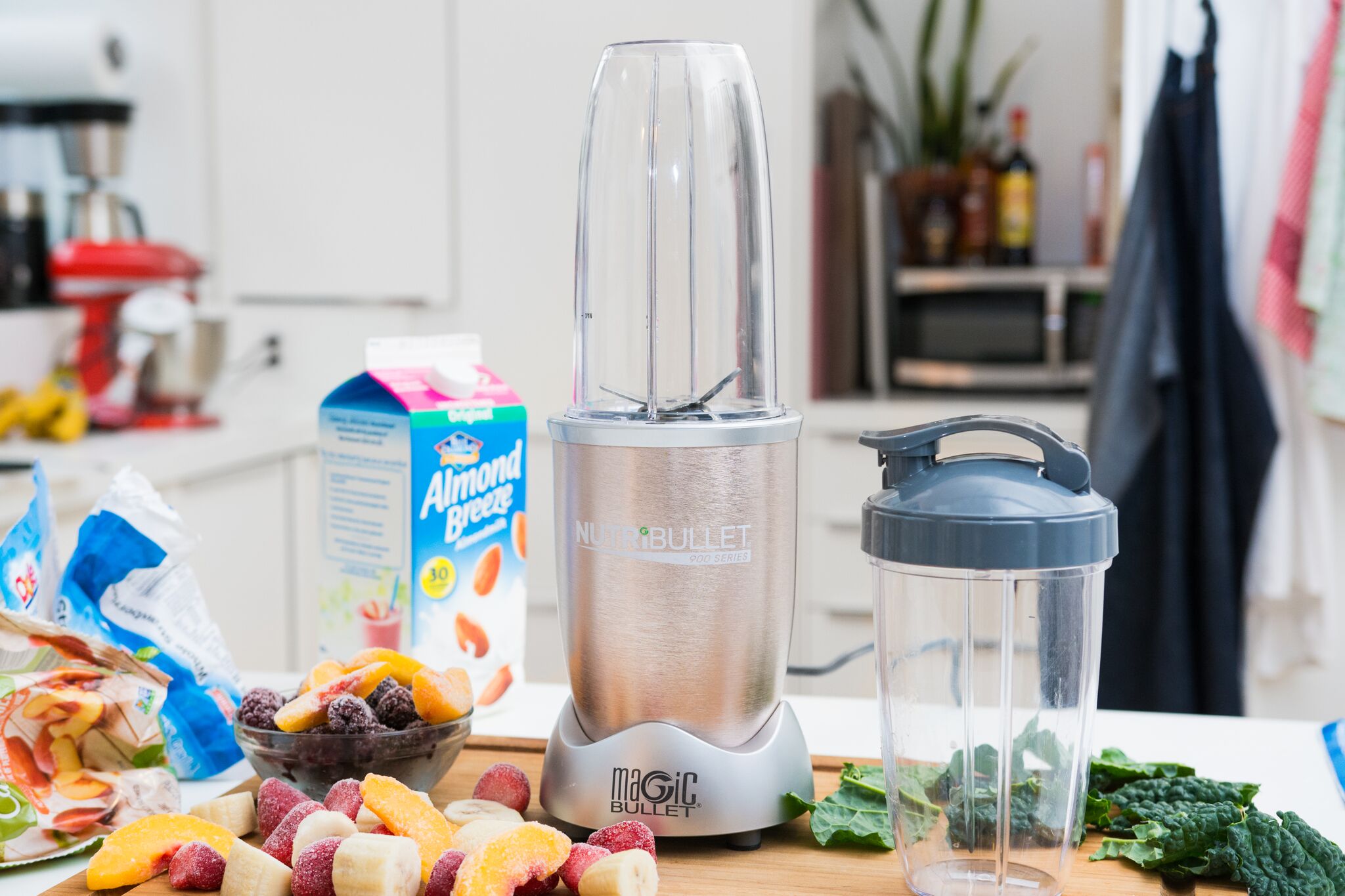
Personal Blender: NutriBullet Pro 900 Series
Most would agree that the effort it takes to make a smoothie is usually more than worth it. After researching more than 24 models, we tested 10 personal blenders and chose the NutriBullet Pro 900 Series as our top pick. Compared to other blenders we put to the test, it performed best powering through kale, frozen fruit, fresh ginger fiber and dates, as well as a mid-range full-size blender. Ita great device to have on hand, it pays for itself and quickly produces whatever puree or smoothie you&re in the mood for. Consider an immersion blender for soups and purees that you want to cook in a pot or that call for ingredients that won&t fit in a personal blender.
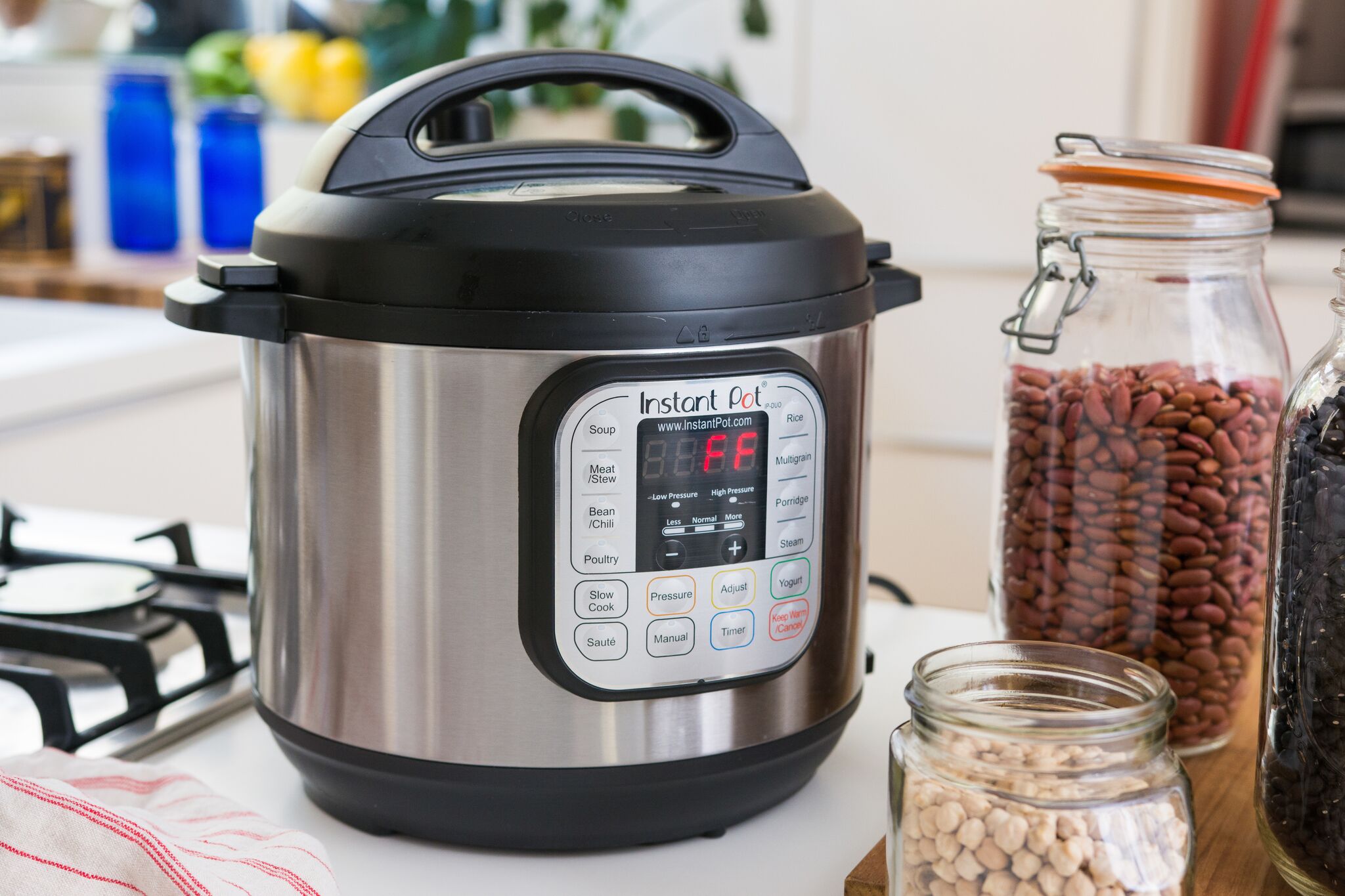
Photo: Michael Hession
Electric Pressure Cooker: Instant Pot Duo 6-Quart
Aside from being able cook a meal — or the most time-consuming components of a meal — in one pot, the biggest perk of using an electric pressure cooker is finishing the task in a fraction of the time. The Instant Pot Duo 6-Quart has three temperature settings and can be used for slow-cooking and sautéing. New cooks or those intimidated by stove-top pressure cookers can rest assured knowing that electric pressure cookers are safe, durable and easy to use. It&ll come in handy more often than not, as you can make almost anything, including stews, sushi rice, braised meat and even cake.
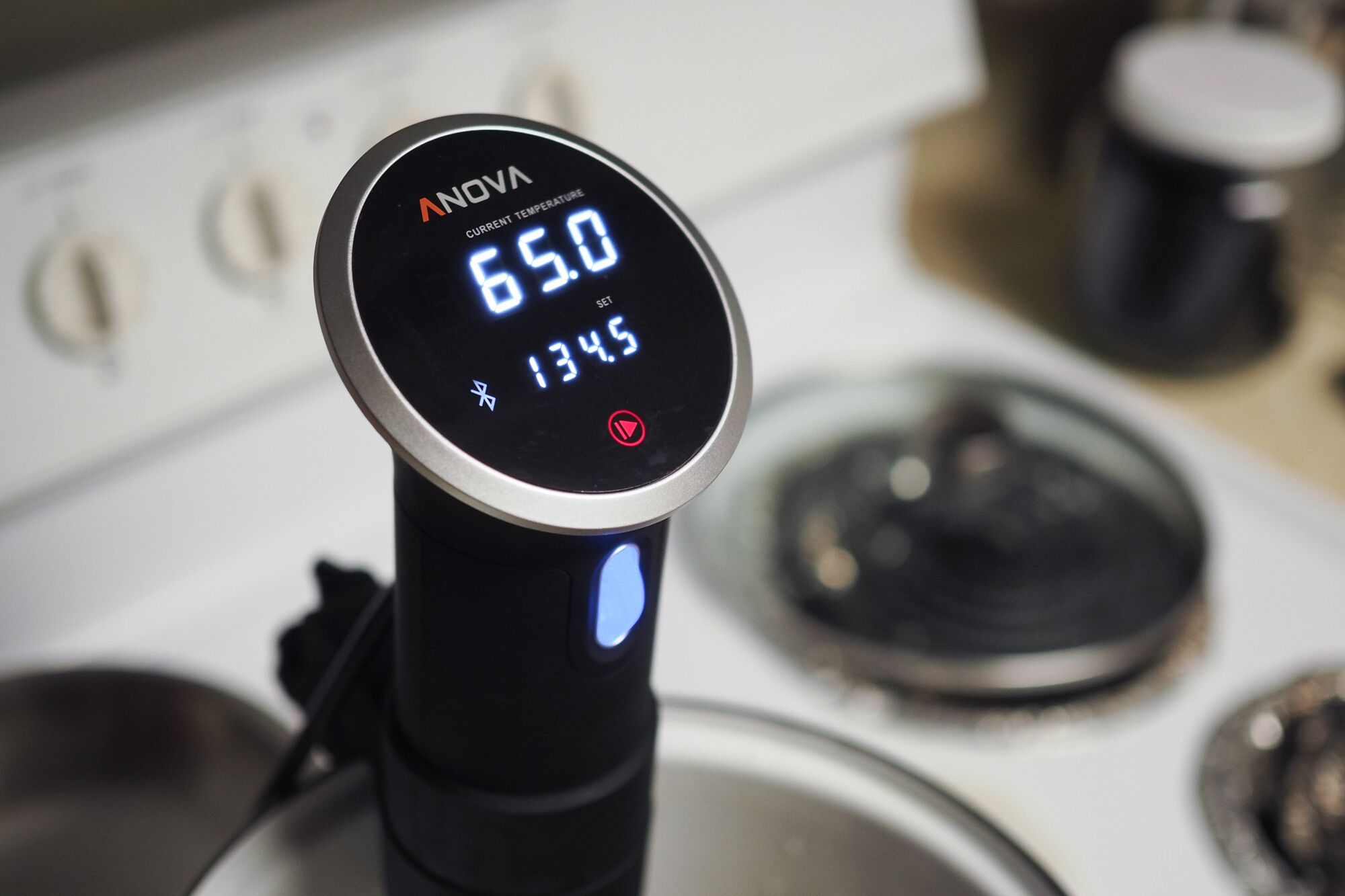
Photo: Tim Barribeau
Sous Vide Cooker: Anova Precision Cooker Wi-Fi
When ittime to impress your friends or do something in the kitchen thatcooler than the norm, breaking out a sous vide cooker will do the trick. The Anova Precision Cooker Wi-Fi is an immersion circulator, which means it simultaneously circulates and heats water in which vegetables, eggs, steak, salmon, Greek yogurt and a list of other foods can be cooked. It clips to the side of a variety of containers and pots, and although it doesn&t require Wi-Fi to work, it enables its timer and temperature to be controlled from anywhere. You&ll need to vacuum seal your food before itcooked — and for a finishing sear we recommend using the Bernzomatic TS8000 searing torch.

The OXO brewer makes flavorful, money-saving concentrate, looks good on a counter and is easier to use and store than any other pick. Photo: Michael Hession
Cold Brew Coffee Maker: OXO Good Grips Cold Brew Coffee Maker
If grabbing coffee at your local café has become a routine, making it at home can be a thing, too. Thereno better time than the summer to invest in a cold brew coffee maker if waking up, getting out the door or surviving the day requires a caffeine boost. We like the OXO Good Grips Cold Brew Coffee Maker because itcompact and has a great design. More importantly, it produced the boldest, most flavorful cup of coffee during testing — plus, its features make brewing and storing coffee easy. Cold brew machines are the best option for iced coffee thatotherwise diluted and weaker-tasting when itmade from refrigerated hot-brewed coffee.
This guide may have been updated by Wirecutter.Note from Wirecutter: When readers choose to buy our independently chosen editorial picks, we may earn affiliate commissions that support our work.
- Details
- Category: Technology
Read more: Gadgets and small appliances that will keep you in the kitchen
Write comment (98 Comments)Sonos has always gone its own way. The speaker manufacturer dedicated itself to network-connected speakers before there were home networks and they sold a tablet-like remote control before there were tablets. Their surround sound systems install quickly and run seamlessly. You can buy a few speakers, tap a few buttons, and have 5.1 sound in less time than it takes to pull a traditional home audio system out of its shipping box.
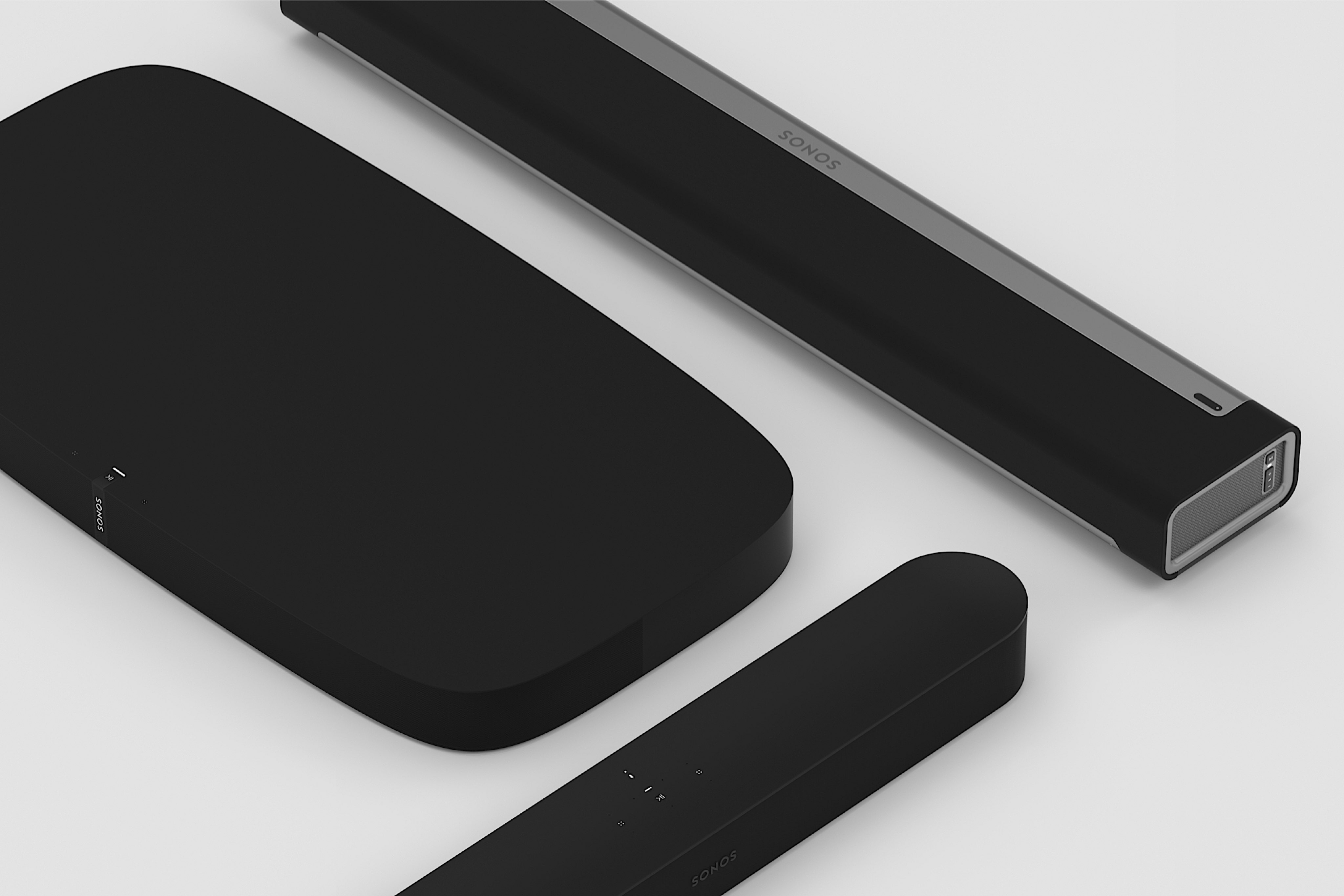
This latest model is an addition to the Sonos line and is sold alongside the Playbase & a lumpen soundbar designed to sit directly underneath TVs not attached to the wall & and the Playbar, a traditionally-styled soundbar that preceded the Beam. Both products had all of the Sonos highlights & great sound, amazing interfaces, and easy setup & but the Base had too much surface area for more elegant installations and the Bar was too long while still sporting an aesthetic that harkened back to 2008 Crutchfield catalogs.
The $399 Beam is Sonos& answer to that and it is more than just a pretty box. The speaker includes Alexa & and promised Google Assistant support & and it improves your TV sound immensely. Designed as an add-on to your current TV, it can stand alone or connect with the Sonos subwoofer and a few satellite surround speakers for a true surround sound experience. It truly shines alone, however, thanks to its small size and more than acceptable audio range.
To use the Beam you bring up an iOS or Android app to display your Spotify, Apple Music, Amazon, and Pandora accounts (this is a small sampling. Sonos supports more.) You select a song or playlist and start listening. Then, when you want to watch TV, the speaker automatically flips to TV mode & including speech enhancement features that actually work & when the TV is turned on. An included tuning system turns your phone into a scanner that improves the room audio automatically.
The range is limited by the Beamsize and shape and there is very little natural bass coming out of this thing. However, in terms of range the Beam is just fine. It can play an action movie with a bit of thump and then go on to play some light jazz or pop. I&ve had some surprisingly revelatory sessions with the Beam when listening to classic rock and more modern fare and itvery usable as a home audio center.
The Beam is two feet long and 3 inches tall. It comes in black or white and is very unobtrusive in aly home theatre setup. Interestingly, the product supports HDMI-ARC aka HDMI Audio Return Channel. This standard, introduced in TVs made in the past five years, allows the TV to automatically output audio and manage volume controls via a single HDMI cable. What this means, however, is you&re going to have a bad time if you don&t have HDMI-ARC.
Sonos includes an adapter that can also accept optical audio output but setup requires you to turn off your TV speakers and route all the sound to the optical out. This is a bit of a mess and if you don&t have either of those outputs & HDMI-ARC or optical & then you&re probably in need of a new TV. That said, HDMI-ARC is a bit jarring for first timers but Sonos is sure that enough TVs support it that they can use it instead of optical-only.
The Beam doesn&t compete directly with other &smart& speakers like the HomePod. It is very specifically a consumer electronics device, even though it supports AirPlay 2 and Alexa. Sonos makes speakers and good ones at that and that goal has always been front and center. While other speakers may offer a more fully-featured sound in a much smaller package, the Beam offers both great TV audio and great music playback for less than any other higher end soundbar. Whole room audio does get expensive & about $1,200 for a Sub and two satellites & but you can simply add on pieces as you go. One thing, however, is clear: Sonos has always been the best wireless speaker for the money and the Beam is another win for the scrappy and innovative speaker company.
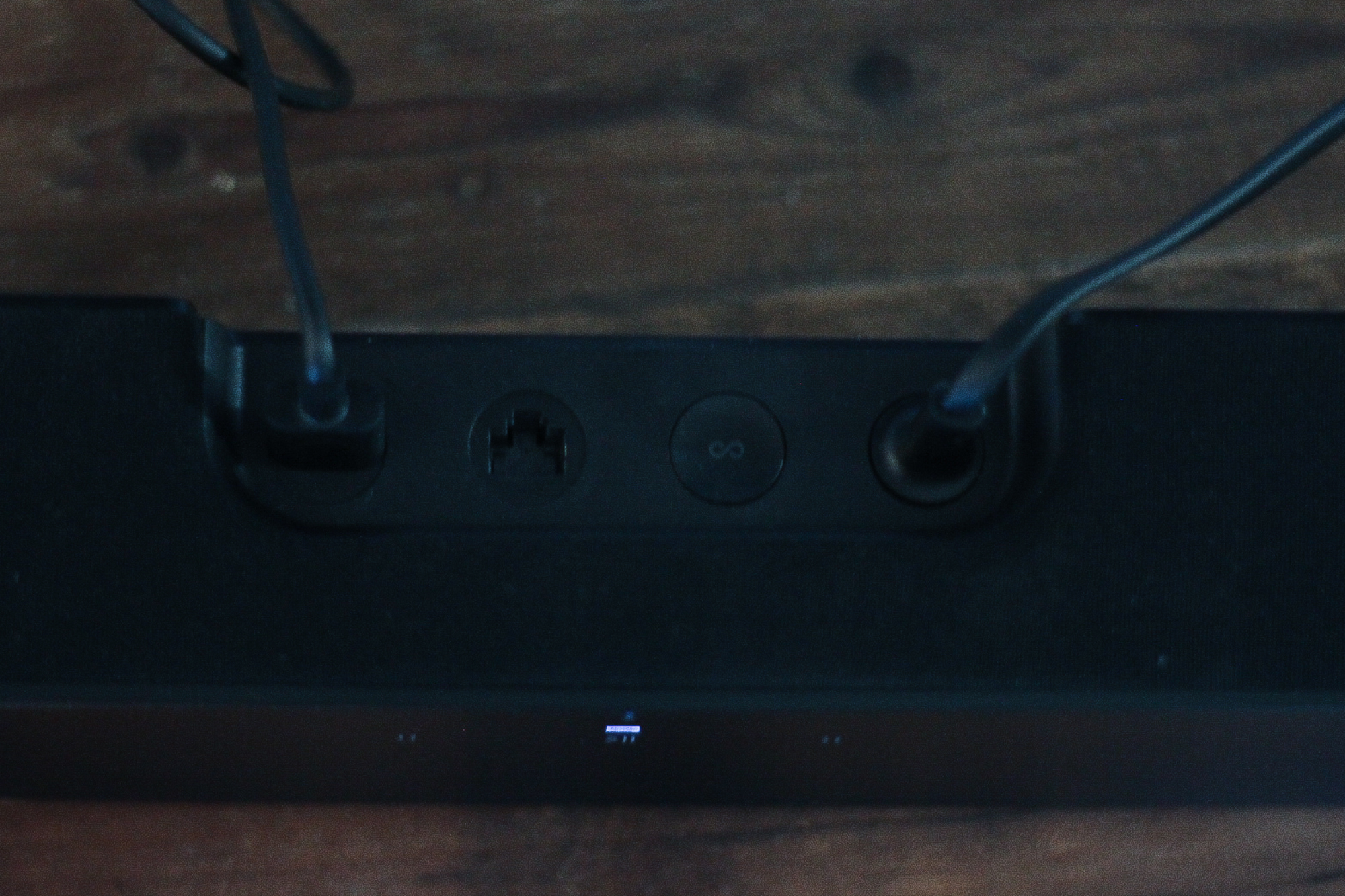
- Details
- Category: Technology
Read more: The Sonos Beam is the soundbar evolved
Write comment (92 Comments)A month and change after I/O, Google convenes a meeting of a few small groups of journalists at an upscale Thai restaurant in ManhattanUpper East Side. Itan unusual locale for one of the worldlargest companies.
The tables are cleared out to make room for nine chairs, in three rows of three, facing a large, brightly lit display. To the side, four Google employees sit behind a desk at a makeshift control center. The company is finally ready to offer a little more insight into Duplex, the most widely discussed — and controversial announcement during a rapid-fire keynote.
Ita 180-degree shift from that sun-drenched day at Mountain ViewShoreline Ampitheatre. All by design, of course. The cozy New York restaurant makes as much sense as any for such an event, as the company pulls back the curtain on the AI-based reservation service. Thep Thaiowner insists that such a service would be something of a godsend for the 100-plus reservations the restaurant fields on a daily basis.
For Google, it was clearly time to offer some more transparency into both the purpose for such a system and the workings behind it. The brief demo presented by CEO Sundar Pichai raised far more questions than it answered. The think pieces began to flow, exploring the ethical ramifications for a system that appeared to be designed to fool a business into believing they were talking to a fellow human being.
Duplex represents a rare early look into an ongoing project from a company notorious for playing it close to the vest. But disclosure is key. As with self-driving cars, rigorous real-world testing is required to iron out all of the kinks in the system.
&While we&re not widely launching this feature yet, we&re sharing more information about this technology to provide transparency and encourage feedback,& the company writes in a blog post today. &Itimportant that we get the experience right both for people and for businesses, and we&re taking a slow and measured approach as we incorporate learnings and feedback from our tests.&
The nature of Googleprocess was likely to get out some way or another, so announcing it at I/O served the dual purpose of getting in front of that narrative and offering an early look at an ambitious project on one of the companylargest stages.
&What you&re going to hear is the Google Assistant scheduling an appointment at a real hair salon,& Pichai said to tentative applause during the keynote:
Hi, I&m calling to book a womenhaircut for a client. Um, I&m looking for something on May 3. & Google Assistant
Sure, give me one second. & Receptionist
Mm-hm. & Google Assistant
It was here the audience laughed, unbelieving. Then applause. Sure, the audience was in on the joke, but it was still hard to believe that what we were hearing was a purely automated version of GoogleAI assistant. The &mm-hm& was icing on the cake — a subtle vocal tick included to further conversation, all while leaving the other party none the wiser that she was speaking to a ‘bot.
Those vocal breaks, known as &speech disfluencies& in linguistics, are a normal and frequent part of speech, and a key part of the secret sauce that makes Duplex such a remarkable product. Among other things, they&re a polite workaround for the system.
https://techcrunch.com/wp-content/uploads/2018/06/DMS03IIQXU3TY2FD6DLPLOMBBBJ2CH188143148.mp3If Duplex is confronted with an uncertain response after requesting a reservation for a party of five, for example, it will reiterate with the slight variation, &um, for five.& That, hopefully, will resolve potential confusion on the part of the receptionist, while including a subtle linguistic tick that lends a further sense of reality to the conversation.
These elements are a very real part of the way Duplex works. I can confirm this, having stood in for the role of the receptionist during a demo at the Thai restaurant. As for the two demos played over the big screen at I/O, they were, in fact, real. Even more interestingly, the company says it informed the businesses after the calls were placed, seemingly to lend an extra level of authenticity to the process.

Duplex was — and still is — very much a work in progress. Among other things, the system didn&t provide a disclosure in the early days, a fact that could potentially violate the &two-party consent& required to record phone calls and conversations in states like Connecticut, Florida, Illinois, Maryland, Massachusetts, Montana, New Hampshire, Pennsylvania, Washington and Googleown home base of California.
Going forward, the system will be confined to those states where the laws make it feasible. That also applies to interstate calls, so long as both sides are covered. &We want to make sure it operates in a way thatgoverned by whatever the laws are that are appropriate for that call,& Google Assistant VP, Product and Design Nick Fox says.
While the disclosures weren&t there in the earliest stage, the company has said since the beginning that it intended to add them. The motivation, however, wasn&t due to feared legal repercussions, so much as common robot/human etiquette.
&The Google Duplex technology is built to sound natural, to make the conversation experience comfortable,& the company wrote in a blog post tied to the announcement. &Itimportant to us that users and businesses have a good experience with this service, and transparency is a key part of that. We want to be clear about the intent of the call so businesses understand the context. We&ll be experimenting with the right approach over the coming months.&
https://techcrunch.com/wp-content/uploads/2018/06/KOK4HAMTAPH5Z96154F6GKUM74A3Z1576269077.mp3Pressed by the media about what form such &transparency& would ultimately take, a spokesperson for the company added later, &We understand and value the discussion around Google Duplex — as we&ve said from the beginning, transparency in the technology is important. We are designing this feature with disclosure built-in, and we&ll make sure the system is appropriately identified. What we showed at I/O was an early technology demo, and we look forward to incorporating feedback as we develop this into a product.&
In its current form, that plays out thusly:
Hi, I&m the Google Assistant calling to make a reservation for a client. This automated call will be recorded.
Duplex doesn&t let on the fact that itan AI — but if you have some familiarity with Google Assistant, you can probably put that part together yourself. It does, however, let you know that the call is being recorded. Google records these conversations for both voice to text processing and quality assurance purpose, so the company can continue to revise and refine the system.
In my test call, I attempt to get Google Assistant to repeat that bit — iteasy enough to not hear that opening line, particularly when you&ve got the phone up to your ear inside a crowded restaurant. But the AI just barrels on with the reservation. If you miss the disclosure, you&re out of luck — for now, at least. At present, the only way to opt out of being recorded is to just hang up the phone — not the best way to get repeat visitors.

&We do have a mechanism that will say ‘okay, I won&t record you,& &Google Assistant VP Engineering Scott Huffman explains. &I think we&re still figuring out whatthe right thing to do there. Is the right thing bow out To basically throw away the recording&
Like just about everyone else getting a demo that day, I try my best to throw the system off. Assistant asks for a booking at 6PM. I tell it we&re not open until 11 — this is Manhattan, after all, the best/most exclusive places keep the most insane hours, right Assistant politely ends the call — or &bows out,& as Google puts it.
The Holy Grail here is attempting to Turing test the shit out of Duplex. If you succeed, one of Googlehuman operators will take the controls and land the plane. These human operators are an integral part of testing for Duplex, and Google says it plans to keep them around in some form going forward, to assure that things never get too out of control. How large a group that will ultimately take remains to be seen.
No one in our small group succeeds in invoking a real-life human during our brief chats, though we learn some important insights into the systemslimitations. For instance, asked to &repeat the last four numbers,& it restates the phone number in its entirety. Itnot a flaw, exactly, but it does show a simple place where the system is pushed to its limitations with regard to the understanding of the the subtle nuances of human conversation.
Asked for the useremail address, on the other hand, the system simply says it doesn&t have the permission of its &client& to disclose such information, maintaining the whole &assistant& relationship. Google says that, in testing, the system has also gotten tripped up encountering another machine by way of a phone tree. Listening closely because our menu options have changed doesn&t appear to compute just yet.
At present, Google says Duplex is able to complete four out of five fully automated tasks, according to the company. Eighty-percent is pretty good, but Google is pushing to make things better. &We want to make sure that we&re not wasting the businesstime,& Fox says. &We want to make sure throughout everything we do here, that this is good experience for the business and that they&re not getting frustrated talking to an assistant while they&re trying to run their business.&
As announced at I/O, more testing will commence this summer. Over the &coming weeks,& the next round will find Assistant inquiring about business hours. And in the next few months, it will expand to restaurant reservations and hair salon appointments. Unlike those I/O demos, these will occur with &a limited set of trusted testers and select businesses,& who will be in on it.
Companies thus far seem eager to get on-board. As Google notes, according to a customer survey it conducted back in April, &60 percent of small businesses who rely on customer bookings do not have an online booking system set up.&

For users who simply don&t want to pick up the phone, Duplex provides a compelling alternative. For those businesses, it means adding more potential customers. Those who&d rather not get on-board for any number of reasons, on the other hand, will be able to opt out through their Google Business listings (assuming they have one).
The box reads:
Let customers use the Google Assistant to book with you. Also, quickly update your listings by getting occasional calls to confirm your detail.
The system has come a long way since it began life as ajury-rigged demo with an office phone placed gingerly atop a MacBook. Duplex operates through a complex combination of speech to text, text to speech and Googleown WaveNetaudio processing deep neural network. The early demos weren&t live as some speculated, but they were, in fact, real — and things are only getting more impressive from there.
Like it or not, Duplex is coming soon. And the only way to stop it is to hang up the phone.
- Details
- Category: Technology
Read more: A closer look at Google Duplex
Write comment (95 Comments)CloudBees, the Jenkins-based devops platform that recently acquired Codeship, today announced that it has raised a $62 million funding round. The round consists of a traditional $37 million equity round led by Delta-v Capital and $25 million of growth financing from Golub CapitalLate Stage Lending. Existing investors, including Matrix Partners, Lightspeed Ventures, Unusual Ventures and Verizon Ventures, also participated.
With this round, CloudBees has now raised a total of over $100 million since it was founded back in 2010. In a fast-growing and competitive business like devops, thatthe kind of funding you need to be able to buy up smaller players and expand quickly to gain the kind of market share you need to compete with the other large players in this business.
&Today, virtually every company is using software to continuously improve its products and business,& said Matt Parson, CloudBees& chief financial officer. &The DevOps market is exploding as the transformation to a global continuous economy emerges. We have seen significant growth in our business over the last several years, but we now see an even bigger opportunity just in front of us as continuous software delivery becomes a strategic imperative for every business.&
CloudBees& customers currently include 46 of the Fortune 100 enterprises and three of the Fortune 10.
The open source Jenkins automation server forms the core of CloudBees& product lineup (and it also offers training and certification for Jenkins). Like similar open-source companies, CloudBees then extends Jenkins with additional enterprise features and bundles them into its various offerings. With the recently acquired CodeShip, it now also offers an additional continuous integration and delivery platform that it can offer as a hosted service that isn&t so closely tied to Jenkins.
- Details
- Category: Technology
Read more: CloudBees raises $62M for its devops platform
Write comment (99 Comments)Twilio, the publicly traded API-first communications platform, today announced the launch of Twilio Build, its new partner program. Twilio Build is an extension of the companyexisting partner program, which originally launched back in 2014.
The original program only offered a number of basic services to help partners reach more customers. Build, however, offers everything from go-to-market support to certification and training programs. Twilio has also created a partner success team to support both its consulting and technology partners.
&Twiliounique API-first approach provides partners the full power and reach of a global communications network combined with the flexibility and speed they expect in the cloud,& said Ron Huddleston, chief partner officer at Twilio, in todayannouncement. &In the end, successful partners are differentiated by the innovations they deliver for their customers. With Twilio Build and our API-first approach, anything our partners can think of is possible.&
Some of the launch partners in the consulting area includeBlacc Spot, DVELP, Impekable, Nethram, Perficient, Silicon Valley Software Group and Vision Point Systems, while its first batch of tech partners includeZendesk, IBM Watson, Voicebase, WhitePagesPro and Ytica.
As is typically the case, Twilio will offer two tiers for its partners. Therethe regular ®istered& tier and, for those who qualify, a ‘gold& tier with access to a more white-glove service. All of the partners will be featured on Twilio website and will get early access to the companyproduct roadmap, in addition to the usual co-selling and lead sharing thattypical for these kinds of programs.
- Details
- Category: Technology
Read more: Twilio launches its new partner program
Write comment (94 Comments)Page 4910 of 5614

 11
11





